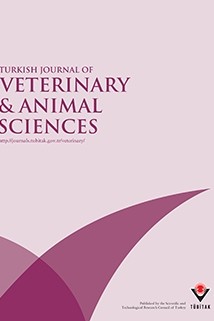
Turkish Journal of Veterinary and Animal Sciences
Yazarlar: Hüseyin Baki ÇİFTÇİ
Konular:-
Anahtar Kelimeler:Mouse,Amino acids,Culture,Follicle growth,Atresia
Özet: This work was designed to test the effect of serine and threonine on follicle growth, differentiation and atresia under in vitro and in vivo conditions. Two experiments were conducted. In the first experiment, follicles 90-120 µm in diameter, from 21-day old mice, were dissected mechanically and cultured individually for 7 days. Follicles were subjected to 4 different treatments. Follicles in medium without amino acids and gonadotrophins were assigned as control groups. Follicles in medium with PMSG and without amino acids constituted a positive control whereas the other treatments were test groups. Every 24 h follicle diameters were measured and the media was changed. In the second experiment, the mice were injected daily with 0.2 ml of saline (control) or saline with a mixture of serine and threonine (test) for 5 days. After the last injection, the mice were cervically dislocated and the ovaries were removed and then stained with haematoxylin and eosin. The numbers of activated primordial follicles, primary follicles, preantral follicles, antral follicles and atretic follicles were blind counted in every 7 sections. In culture, neither of the treatments significantly increased the diameters of the follicles over those of the control group. According to the results of the second experiment, the injection of serine/threonine significantly reduced the number of activated primordial follicles entering the primary stage of growth, but after the primary stage the growth rate increased in the amino acid injected animals. Preantral follicle growth beyond the secondary stage was stimulated by amino acid injection and more follicles went through to the antral stage. As the growth rate increased, the number of atretic follicles was also increased by amino acid injection. In the early antral stage, the number of atretic follicles in the test animals was significantly lower, because atresia in the test group occurred mostly in the late antral stage.